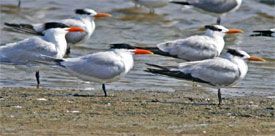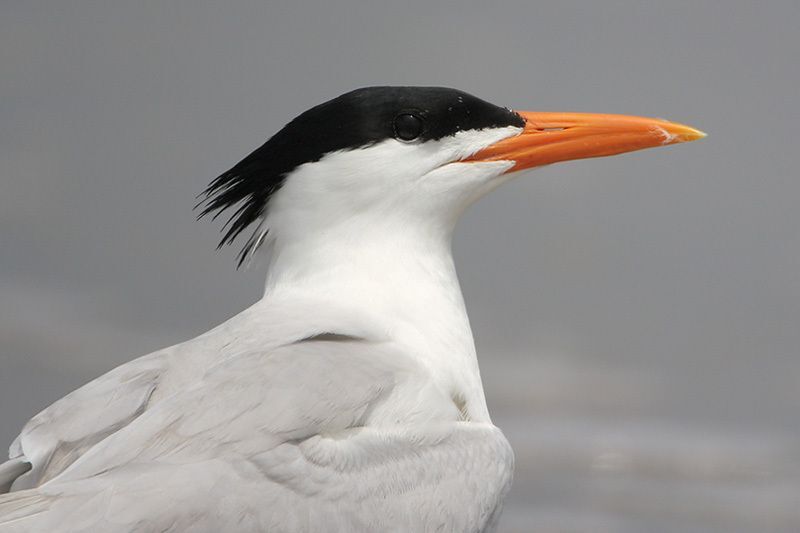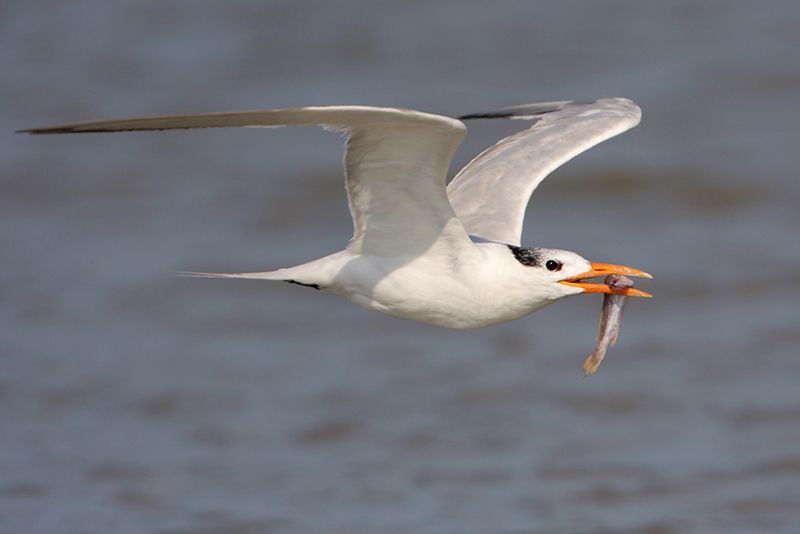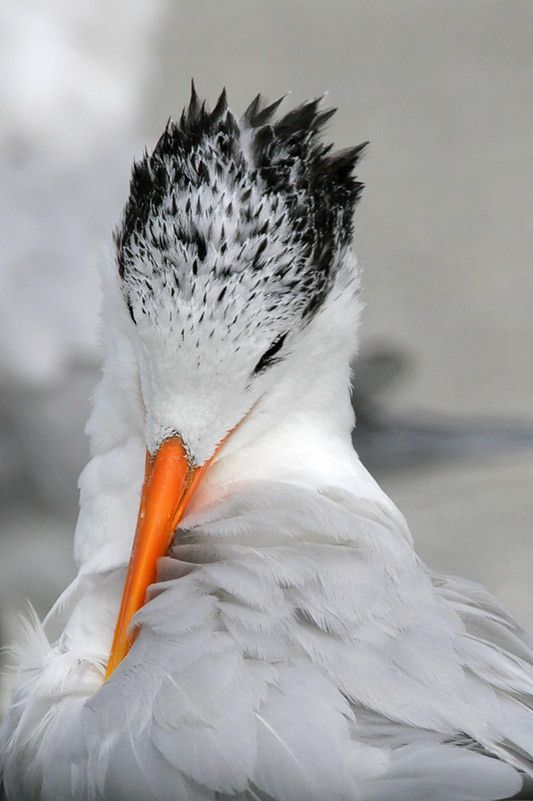Royal Tern

© David McDonald
Thalasseus maximus
Family: (Laridae) Gulls and Terns
Preferred Habitat: Beaches and coastal marshes.
Seasonal Occurrence: Common winter through spring; abundant in summer and fall. Nest in our area.
Profile by Rachel Myers: The Royal Tern is a year-round resident that nests on the Upper Texas Coast. They are social birds, and often gather on undisturbed beaches and nest in dense colonies. They are easy to distinguish in the breeding and non-breeding season. They are mostly white with light gray wings, a forked tail, and a bright orange bill. Breeding Royal Terns display a shaggy fully black crown. During the non-breeding season (late summer, fall, and winter), Royal Terns lose most of their black crest and have a white forehead and black band on the back of the head.
For their entire lives, Royal Terns inhabit warm coastal marine waters, and normally rest and forage near the shore. They may venture offshore or head inland along bays and rivers to feed their young. Hurricanes may often displace them towards interior North America. Royal Terns mostly eat small fish and shrimp. They fly 20-30 feet above the water and plunge-diving to capture prey. They will forage alone, or in groups of up to hundreds of birds. Depending on the region, they will sometimes feed on other prey items including crabs and squid.
Royal Terns nest in dense colonies and will tolerate each other except during the peak of courtship, when males often fight with each other. These birds court both in the air and on the ground. In the air, the male and the female will spiral in flight, with the male giving the female an offering In the form of a fish. On land, the male will present the female with a food offering and then bow, raising their crest. Once bonded, the female and the male stay close together in the colony. The male and female then select a nest site and dig with their feet to create a small depression in the ground.
Males will feed the females during courtship and incubation and will help incubate the eggs. The average clutch size for these birds is 1-2 eggs and after 28-31 days of incubation, the chicks will hatch. After hatching, chicks are already covered with down and are able to leave the nest the next day. Within 2-3 days after hatching, the young leave the nest and join others in a group called a crèche. This group may have thousands of chicks, but the parents and chicks are able to recognize each other by voice, so adults will only feed their own young.
Abundant in the summer, Royal Terns are commonly spotted almost anywhere on our coastal beaches. Sea Rim State Park, Galveston Island, and our Bolivar Flats Shorebird Sanctuary are great places to observe Royal Terns.
-
Cornell Lab of Ornithology
-
Bird Guide
-
Bird Library

© Greg Lavaty, www.texastargetbirds.com

© Greg Lavaty, www.texastargetbirds.com

© Greg Lavaty, www.texastargetbirds.com

© Greg Lavaty, www.texastargetbirds.com




















